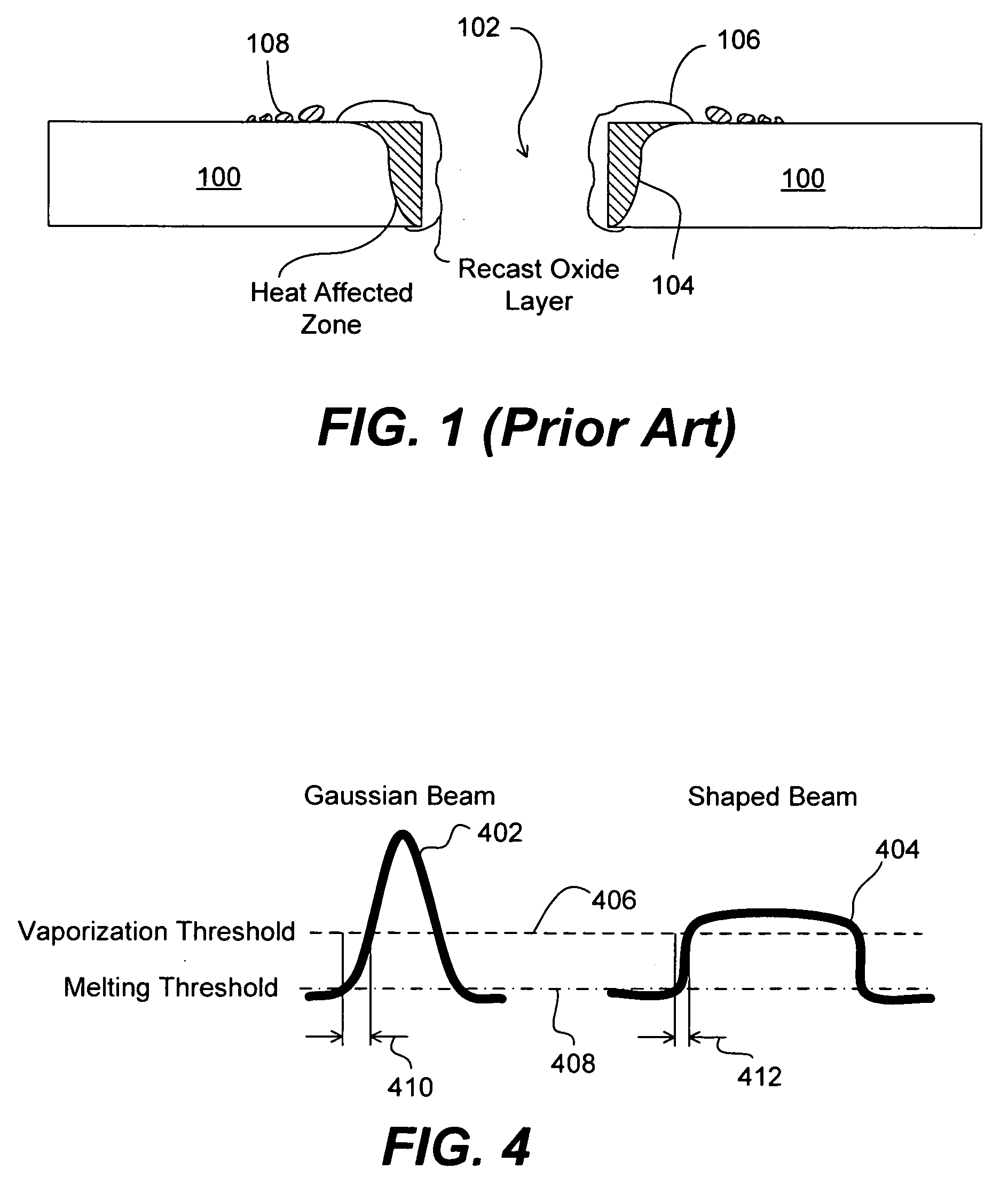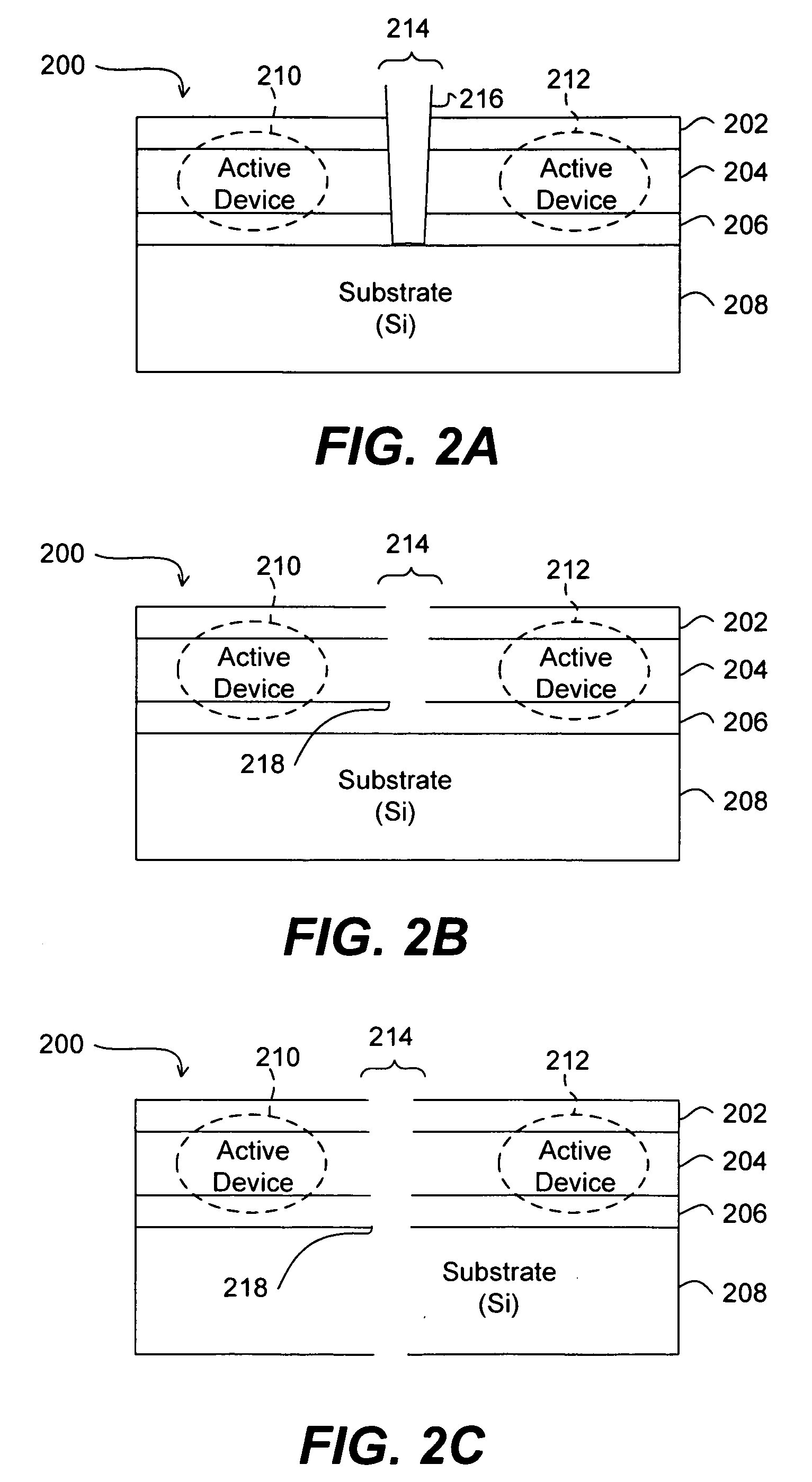Ultrashort laser pulse wafer scribing
a laser pulse and ultrashort technology, applied in the field of laser cutting or scribing, can solve the problems of lack of mechanical strength, low k dielectric material very sensitive to stress, and conventional mechanical and laser cutting methods are not well suited for scribing many advanced finished wafers, etc., to achieve the effect of reducing or no mechanical and/or thermal stress, and reducing or no debris
- Summary
- Abstract
- Description
- Claims
- Application Information
AI Technical Summary
Benefits of technology
Problems solved by technology
Method used
Image
Examples
Embodiment Construction
[0026]The ability of a material to absorb laser energy determines the depth to which that energy can perform ablation. Ablation depth is determined by the absorption depth of the material and the heat of vaporization of the material. Parameters such as wavelength, pulse width duration, pulse repetition frequency, and beam quality can be controlled to improve cutting speed and the quality of the cut surface or kerf. In one embodiment, one or more of these parameters are selected so as to provide a substantially low fluence (typically measured in J / cm2) that has just enough energy to ablate the target material. Thus, the amount of excessive energy deposited into the material is reduced or eliminated. Using a lower fluence reduces or eliminates recast oxide layers, heat affected zones, chipping, cracking, and debris. Thus, die break strength is increased and the amount of post-laser cleaning required is decreased.
[0027]U.S. Pat. No. 5,656,186 to Mourou et al. teaches that the ablation ...
PUM
| Property | Measurement | Unit |
|---|---|---|
| energy | aaaaa | aaaaa |
| energy | aaaaa | aaaaa |
| average power | aaaaa | aaaaa |
Abstract
Description
Claims
Application Information
 Login to View More
Login to View More - R&D
- Intellectual Property
- Life Sciences
- Materials
- Tech Scout
- Unparalleled Data Quality
- Higher Quality Content
- 60% Fewer Hallucinations
Browse by: Latest US Patents, China's latest patents, Technical Efficacy Thesaurus, Application Domain, Technology Topic, Popular Technical Reports.
© 2025 PatSnap. All rights reserved.Legal|Privacy policy|Modern Slavery Act Transparency Statement|Sitemap|About US| Contact US: help@patsnap.com



